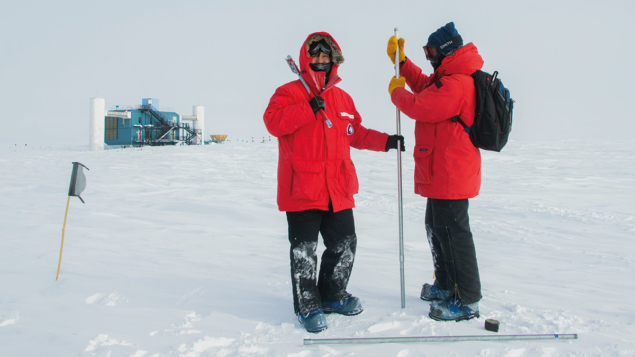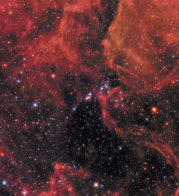
The XIX International Workshop on Neutrino Telescopes (NeuTel) attracted 1000 physicists online from 18 to 26 February, under the organisation of INFN Sezione di Padova and the Department of Physics and Astronomy of the University of Padova.
The opening session featured presentations by Sheldon Lee Glashow, on the past and future of neutrino science, Carlo Rubbia, on searches for neutrino anomalies, and Barry Barish, on the present and future of gravitational-wave detection. This session was a propitious moment for IceCube principal investigator Francis Halzen to give a “heads-up” on the first observation, in the South-Pole detector, of a so-called Glashow resonance – the interaction of an electron antineutrino with an atomic electron to produce a real W boson, as the eponymous theorist predicted back in 1960. According to Glashow’s calculations, the energy at which the resonance shall happen depends on the mass of the W boson, which was discovered in 1983 by Rubbia and his team.
The first edition of NeuTel saw the birth of the idea of instrumenting a large volume of Antarctic ice
The first edition of NeuTel saw the birth of the idea of instrumenting a large volume of Antarctic ice to capture high-energy neutrinos – a “Deo volente” (God willing) detector, as Halzen and collaborators then dubbed it. Thirty-three years later, as the detection of a Glashow resonance demonstrates, it is possible to precisely calibrate the absolute energy scale of these gigantic instruments for cosmic particles, and we have achieved several independent proofs of the existence of high-energy cosmic neutrinos, including first confirmations by ANTARES and Baikal-GVD.
Astrophysical models describing the connections between cosmic neutrinos, photons and cosmic rays were discussed in depth, with special emphasis on blazars, starburst galaxies and tidal-distribution events. Perspectives for future global multi-messenger observations and campaigns, including gravitational waves and networks of neutrino instruments over a broad range of energies, were illustrated, anticipating core-collapse supernovae as the most promising sources. The future of astroparticle physics relies upon very large infrastructures and collaborative efforts on a planetary scale. Next-generation neutrino telescopes might follow different strategic developments. Extremely large volumes, equipped with cosmic-ray-background veto techniques and complementary radio-sensitive installations might be the key to achieving high statistics and high-precision measurements over a large energy range, given limited sky coverage. Alternatively, a network of intermediate-scale installations, like KM3NeT, distributed over the planet and based on existing or future infrastructures, might be better suited for population studies of transient phenomena. Efforts are currently being undertaken along both paths, with a newborn project, P-ONE, exploiting existing deep-underwater Canadian infrastructures for science to operate strings of photomultipliers.
T2K and NOvA did not update last summer’s leptonic–CP–violation results. The tension of their measurements creates counter-intuitive fit values when a combination is tried, as discussed by Antonio Marrone of the University of Bari. The most striking example is the neutrino mass hierarchy: both experiments in their own fits favour a normal hierarchy, but their combination, with a tension in the value of the CP phase, favours an inverted hierarchy.
The founder of the Borexino experiment, Gianpaolo Bellini, discussed the results of the experiment together with the latest exciting measurements of the CNO cycle in the Sun. DUNE, Hyper-K, and JUNO presented progress towards the realisation of these leading projects, and speakers discussed their potential in many aspects of new-physics searches, astrophysics investigations and neutrino–oscillation sensitivities. The latest results of the reactor–neutrino experiment Neutrino-4, which about one year ago claimed 3.2σ evidence for an oscillation anomaly that could be induced by sterile neutrinos, were discussed in a dedicated session. Both ICARUS and KATRIN presented their sensitivities to this signal in two completely different setups.
Marc Kamionkowski (John Hopkins University) and Silvia Galli (Institut d’Astrophysique de Paris) both provided an update on the “Hubble tension”: an approximately 4σ difference in the Hubble constant when determined from angular temperature fluctuations in the cosmic microwave background (probing the expansion rate when the universe was approximately 380,000 years old) and observing the recession velocity of supernovae (which provides its current value). This Hubble tension could hint at new physics modifying the thermal history of our universe, such as massive neutrinos that influence the early-time measurement of the Hubble parameter.





